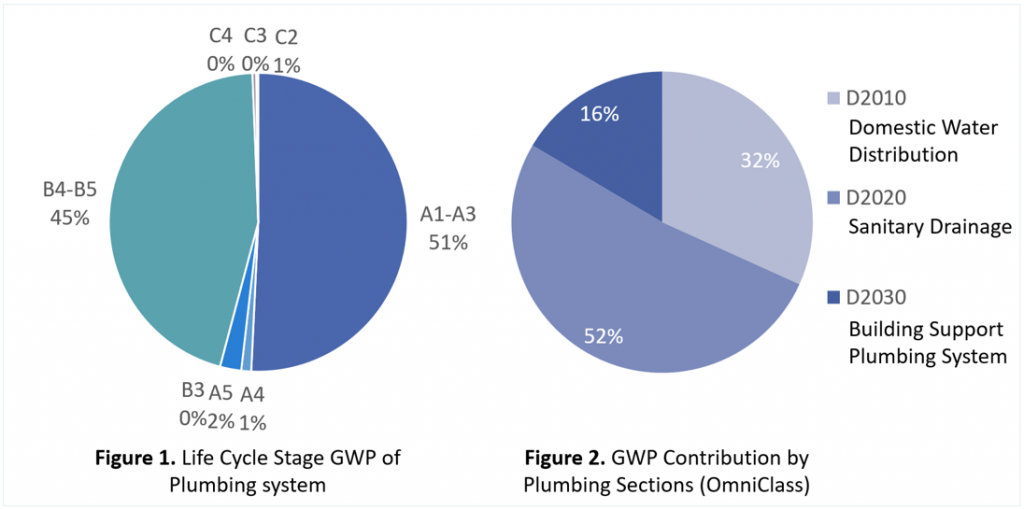Joan Chen | MEL Candidate | December 3, 2024
Industry Partner: Penny Martyn | UBC Campus + Community Planning
Special Thanks To: Forest Borch | ReLoad Sustainable Design Inc.
ABSTRACT
This research focuses on assessing the embodied carbon contributions of the Mechanical, Electrical, and Plumbing (MEP) systems for Building C at BCR-6, UBC – a faculty and staff residential building with a floor area of 15,978 m² and an expected lifetime of 60 years. The building employs a district energy system for heating (excluded from the WBLCA scope) and a heat pump system for cooling. The study was conducted in two phases: Phase One involved exploring different methodologies and tools for MEP system embodied carbon accounting, while Phase Two utilized the selected approach for experimental calculations. This phase also included analysis of limitations and the development of future recommendations.
Phase 1 – MEP WBLCA Methodology & Tool Review
Methodology Selection: The EPD & LCA Database-Based WBLCA method was chosen after comparing it with TM65 Material-Based and BIM Model-Based approaches, due to its balanced feasibility, accuracy, and suitability for this project context.
WBLCA Tool Selection: One-Click LCA was chosen for its superior data coverage and integration capabilities, ensuring consistency with the structure and envelope WBLCA

Phase 2 – MEP System WBLCA Accounting
Plumbing System WBLCA Calculation
- Life Cycle Stage Contributions: GWP is dominated by A1-A3 (51%) and replacements (B4-B5, 45%), replacement consideration is important.
- Component Impact: Sanitary drainage contributes 52% of the plumbing GWP, with acrylic fixtures having significant decarbonization potential.

MEP system WBLCA (Estimation)
- MEP vs. Structure Comparison: MEP systems account for 36% of total embodied carbon, largely from the mechanical system (23%).
- Life Cycle Stage Contributions: MEP’s contribution varies significantly – 14% at A1-A3 compared to 36% over the whole lifecycle -highlighting the need to consider WBLCA accounting.

Discussion & Limitations
Plumbing System WBLCA Findings: Experimental calculations for the plumbing system reveal significant contributions from acrylic materials due to their high embodied carbon and short lifespan. The methodology, using EPDs and databases, was found effective, but with limitations due to incomplete material data and uncertainties from regional EPD differences.
MEP System Accounting Challenges: Data availability remains a critical limitation, particularly for mechanical and electrical systems due to the lack of BIM models, limited supplier engagement, and fragmented data. Benchmarking for MEP systems also lacks comprehensive and consistent methodologies, making comparative analysis difficult.
Key Take-aways
- Methodology Feasibility: Current method works; TM65 and BIM offer more precision with better data.
- MEP GWP Impact: MEP systems significantly contribute to GWP, necessary to consider replacements and refrigerant leaks and report WBLCA results.
- Data Collection: Start data tracking early – from design to construction – integrating site inventory with engineering inputs.
- Further Case Studies: Compare methods, determine acceptable data quality standards and establish benchmarking guideline; conduct sensitivity analyses, and explore decarbonization practices.
Contact Details
Joan Chen
LinkedIn: https://www.linkedin.com/in/joan-chen-8a4891124/